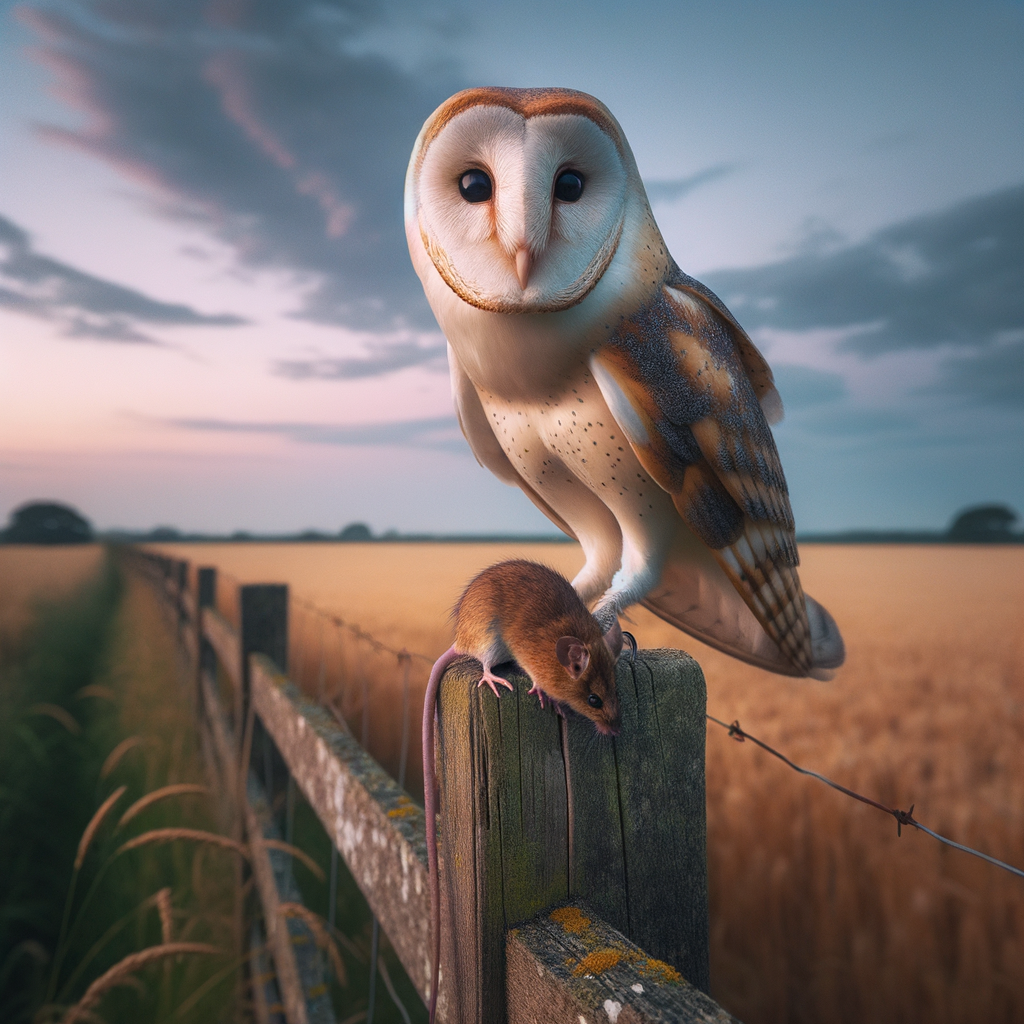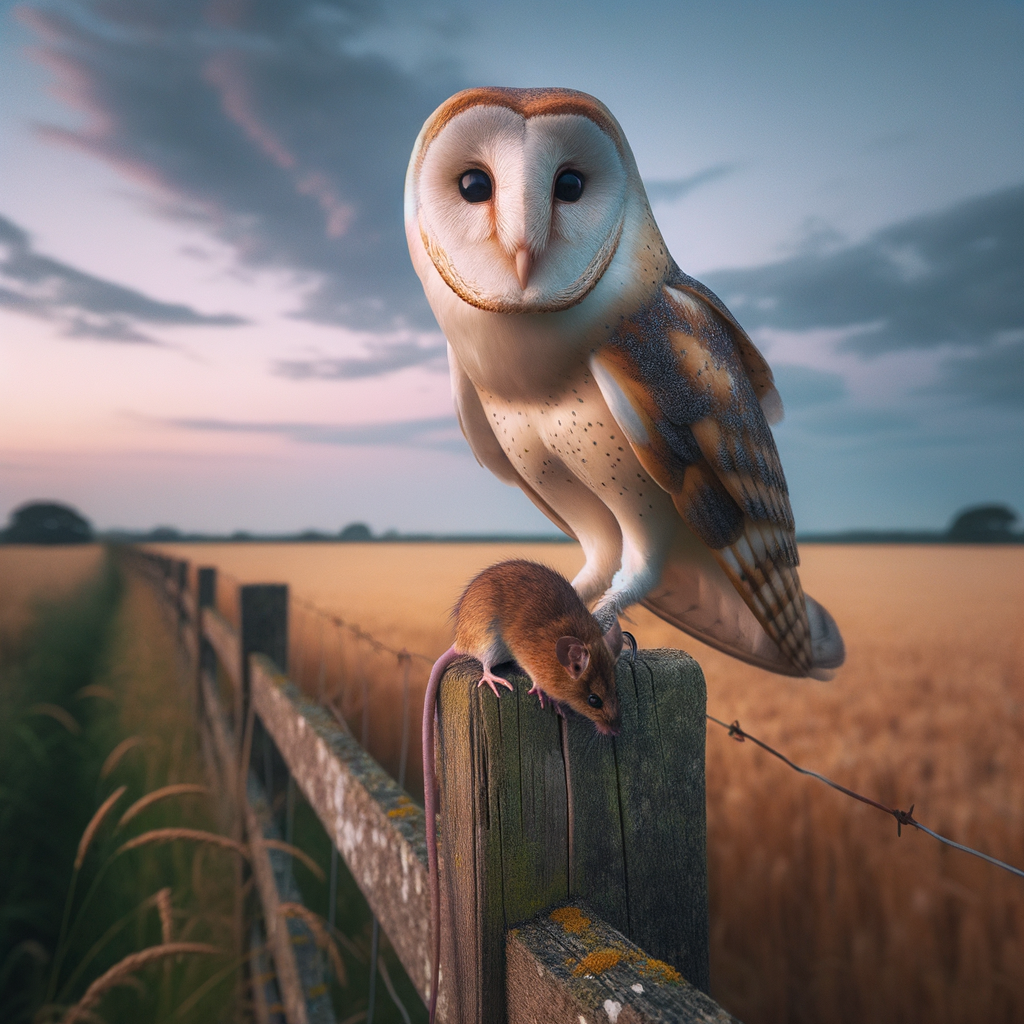
Introduction to Owls as Natural Pest Controllers
- Overview of owls’ role in nature: Owls are fascinating birds of prey known for their hunting skills. They play a crucial role in maintaining the balance of ecosystems. By preying on small animals, they help control the population of these creatures.
- The concept of natural pest control: Natural pest control means using animals, like owls, to manage pests instead of chemicals. This method is eco-friendly and helps keep the environment safe.
- Introduction to the relationship between owls and pest control: Owls are excellent pest controllers. They hunt rodents, insects, and other small animals that can harm crops and spread diseases. By having owls around, farmers can reduce the need for harmful pesticides.
Benefits of Owls in Agriculture
- Reduction in rodent populations: Owls are natural predators of rodents. A single owl can eat hundreds of rodents each year. This helps farmers by keeping the number of mice and rats low. Fewer rodents mean less damage to crops and stored food.
- Decreased reliance on harmful pesticides: Because owls eat many pests, farmers do not need to use as many chemical pesticides. This is good for the environment and for people. Fewer chemicals mean healthier soil and water.
- Contribution to sustainable farming practices: Using owls as pest controllers is a part of sustainable farming. It helps keep the farm ecosystem balanced. Sustainable farming is important for the future of our food supply. It ensures that farming can continue for many years without harming the environment.
Owls Reducing Rodent Populations
How Owls Hunt Rodents
- Owls’ Hunting TechniquesThey use their sharp talons and beaks to catch and kill rodents. Owls have excellent night vision, which helps them see in the dark. They also have great hearing to locate their prey even when it’s hidden.
- Types of Rodents Hunted by OwlsThese include mice, rats, voles, and gophers. Different species of owls may prefer different kinds of rodents. For example, Barn Owls often hunt field mice, while Great Horned Owls might go for larger prey like rats.
- Frequency of Hunting and Impact on Rodent PopulationsA single owl can eat several rodents in one night. This frequent hunting helps control rodent populations. In areas with many owls, the number of rodents can be much lower. This is good for farmers because fewer rodents mean less damage to crops.
Case Study: Barn Owls and Rodent Control
-
Introduction to the Case Study
Barn owls are known for their excellent hunting skills, especially controlling rodent populations. This case study explores how barn owls have been used effectively in agricultural settings to manage pests.
-
Results and Key Takeaways
The study found that introducing barn owls to farms significantly reduced the number of rodents. Here are some key takeaways:
- Reduction in Rodents: Farms with barn owls saw a 50% decrease in rodent populations within the first year.
- Cost-Effective: Using barn owls is cheaper than traditional pest control methods.
- Environmental Benefits: Barn owls provide a natural way to control pests without harmful chemicals.
Overall, barn owls prove to be a valuable asset in sustainable farming practices.
Owls in Integrated Pest Management
-
- Definition of Integrated Pest Management
A method used to control pests in an environmentally friendly way. It combines different techniques to reduce the use of harmful chemicals. These techniques include biological control, habitat manipulation, and use of resistant varieties. The goal is to manage pest damage with the least possible harm to people, property, and the environment.
-
- Role of Owls in This System
They hunt and eat rodents, which are common pests in agricultural fields. By keeping the rodent population in check, owls help reduce the damage these pests can cause to crops. This makes owls valuable allies for farmers looking to protect their harvests.
-
- Benefits and Challenges of Integrating Owls into Pest Management
There are several benefits to using owls in pest management:
-
-
- Natural Pest Control: Owls help control rodent populations without the need for harmful chemicals.
- Cost-Effective: Once established, owls can provide long-term pest control at a low cost.
- Environmental Benefits: Using owls reduces the need for pesticides, which can harm the environment.
-
However, there are also challenges:
-
- Habitat Requirements: Owls need specific habitats to thrive, such as nesting sites and hunting grounds.
- Time to Establish: It can take time for owls to establish themselves in a new area and start controlling pests effectively.
- Monitoring: Farmers need to monitor owl populations and ensure they have the resources they need to survive.
Owls and Crop Protection
Owls vs Pesticides
- Comparison of effectivenessOwls are natural hunters and can be very effective at controlling rodent populations. They hunt at night and can catch multiple rodents in a single night. Pesticides, on the other hand, need to be applied regularly and may not always reach all the pests.
- Environmental impact of each methodThey do not harm the soil, water, or other wildlife. Pesticides can be harmful to the environment. They can contaminate water sources and harm beneficial insects and animals.
- Cost comparisonOwls can be a cost-effective solution for farmers. Once they are attracted to an area, they require little maintenance. Pesticides can be expensive over time, as they need to be purchased and applied regularly.
Ecological Benefits of Owls
- Contribution to biodiversity: They help control the population of small mammals, birds, and insects. This balance allows various species to thrive without one group dominating the ecosystem. For example, by keeping rodent numbers in check, owls ensure that plant life can flourish, which in turn supports a variety of other animals.
- Impact on other wildlife populations: By preying on rodents and insects, they reduce the competition for food among other predators. This helps maintain a balanced food web. For instance, fewer rodents mean more food for other animals like foxes and hawks.
- Role in maintaining healthy ecosystems: Their presence often signifies that the environment is in good condition. Owls help control pest populations naturally, reducing the need for chemical pesticides. This keeps the soil, water, and other wildlife healthier. According to a study by the World Wildlife Fund, natural predators like owls are crucial for sustainable farming practices.
Conclusion: Owls in Sustainable Farming
-
- Summary of Key Points:
Owls are natural pest controllers. They help farmers by eating rodents that harm crops. This reduces the need for chemical pesticides. Owls are a safe and eco-friendly option for pest control.
-
- Future Prospects for Using Owls in Pest Control:
More farmers are learning about the benefits of owls. As awareness grows, we may see more owl boxes on farms. This can lead to healthier crops and less harm to the environment. Studies show that using owls can reduce rodent populations by up to 50%.
-
- Final Thoughts on the Importance of Owls in Agriculture:
Owls play a key role in sustainable farming. They help keep the balance in nature. By using owls, farmers can protect their crops and the planet. Owls are a valuable part of agriculture’s future.
| Benefits of Owls | Impact |
|---|---|
| Reduce Rodent Populations | Up to 50% fewer rodents |
| Lower Pesticide Use | Healthier crops and soil |
| Eco-Friendly | Protects the environment |






